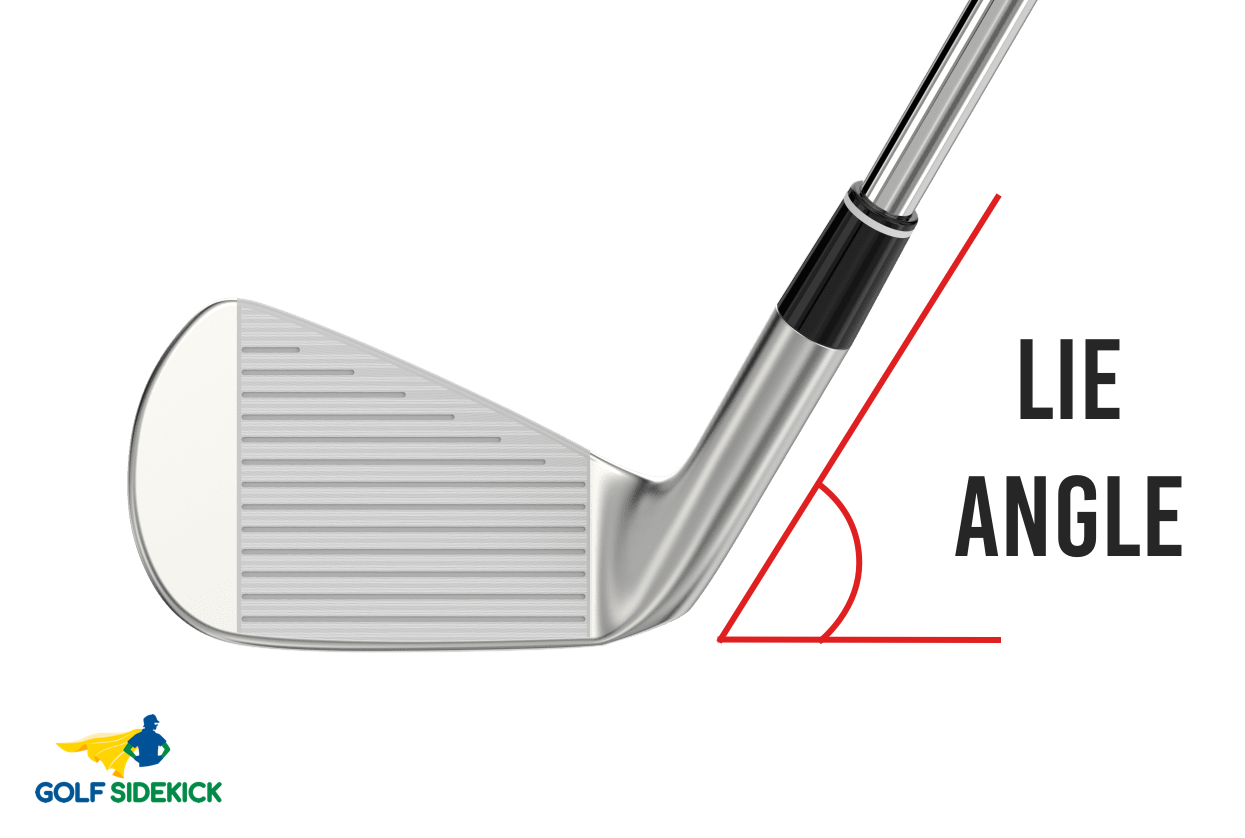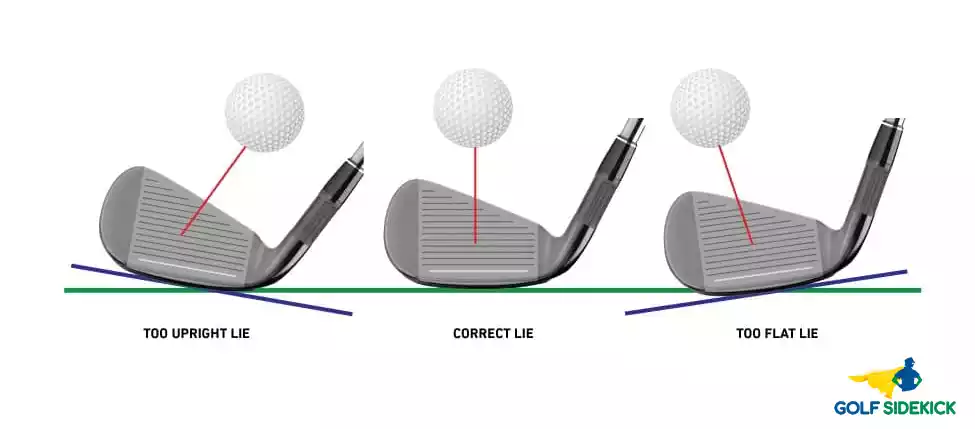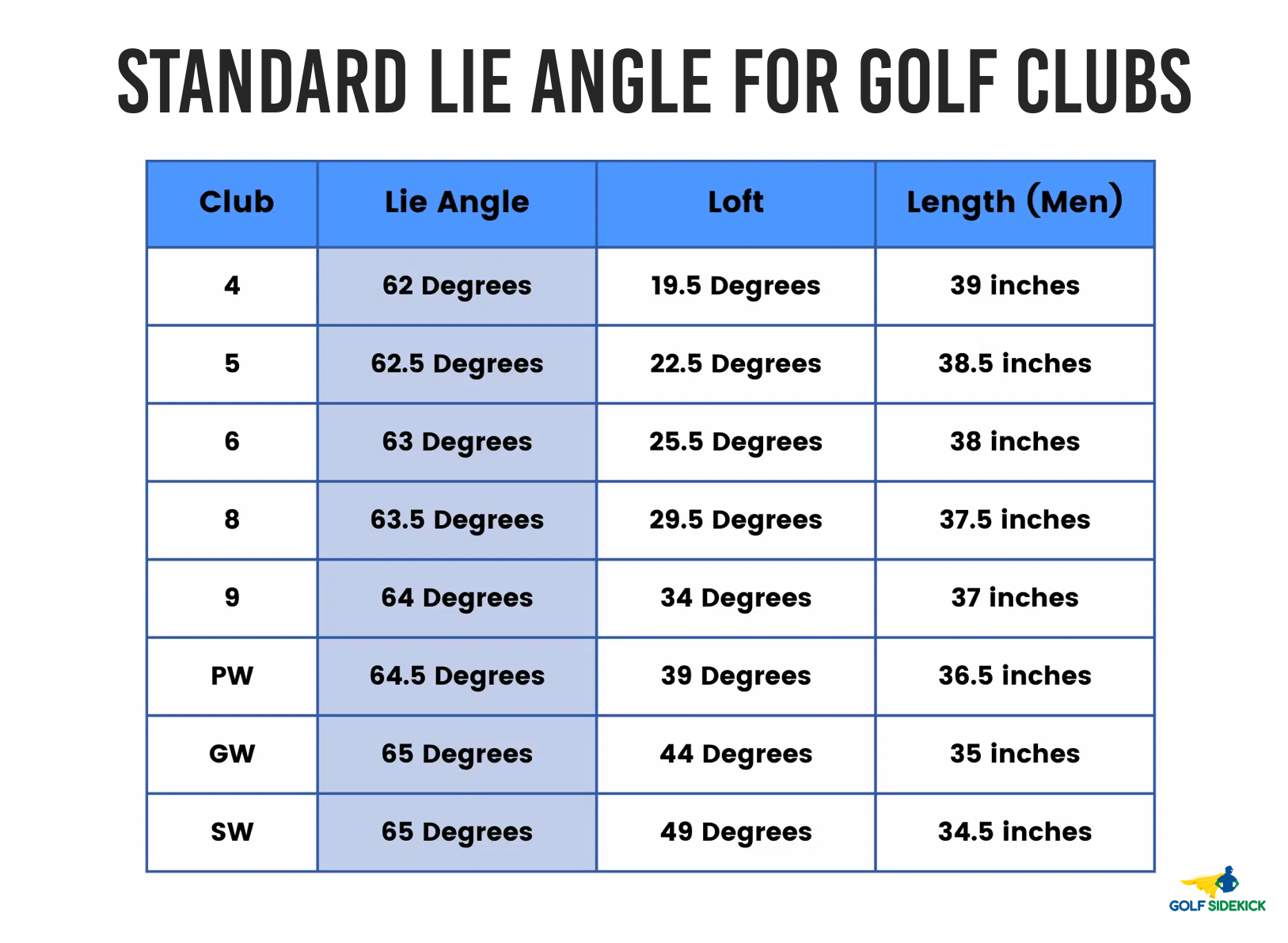In the dynamic world of golf, every detail matters. From your grip to your swing, each element plays a pivotal role in determining your success on the course. Among these often-overlooked factors, the proper lie angle of your golf club can significantly influence the outcome of your shots. In this article, we'll look at how this seemingly minor adjustment to your golf clubs can have a major impact on your game.
What Is Lie Angle and How Do You Measure Lie Angle
In golf, the lie angle of a club refers to the angle formed between the sole of the clubhead and the shaft when the club is placed in a horizontal position on a flat surface. It is a crucial aspect of club fitting because it directly affects how the clubhead interacts with the ground at impact. The lie angle can be measured using specialized tools known as lie angle gauges. These gauges determine the angle at which the sole of the clubhead should be in contact with the ground for the golfer's specific swing.

How To Check Your Lie Angle
Checking your lie angle is a fundamental step in club fitting. To do this, you can use impact tape or foot spray to mark the clubface, make a swing, and observe the mark's location on the clubface after the shot. If the mark is towards the heel (closer to the hosel), the lie angle may be too upright. Conversely, if the mark is towards the toe, the lie angle may be too flat. Additionally, professional club fitters use launch monitors and high-speed cameras to analyze ball flight and clubhead impact to determine the appropriate lie angle for a golfer's swing.
What is a lie board?
A lie board, also known as a lie angle board or lie angle tape, is a tool used in golf club fitting to determine and adjust the lie angle of irons or wedges. It is a flat, rigid board with a series of lines or markings on it. Golfers and club fitters use lie boards to assess whether the lie angle of a golf club is appropriate for the golfer's swing and posture.
Here's how a lie board works:
- Placing the Club: The golfer addresses the ball on the lie board as they would on the golf course, with the clubhead resting on the lie board's surface.
- Impact Mark: When the golfer makes a swing, the clubhead makes contact with the lie board. This contact leaves an impact mark or a pattern of marks on the sole of the club. The location and direction of these marks indicate how the clubhead is interacting with the ground at impact.
- Analysis: By examining the impact marks on the sole of the club, a club fitter can determine whether the lie angle needs adjustment. The ideal lie angle is one that results in a flat, even mark across the club's sole. If the marks show that the toe or heel of the club is making more contact with the lie board, adjustments may be needed.
- Adjustment: If necessary, the fitter can adjust the lie angle of the club by bending the club's hosel. This adjustment is made to ensure that the clubhead sits flush with the ground at impact, promoting a more accurate and consistent ball strike.
Lie boards are particularly useful when fitting irons because the lie angle can have a significant impact on shot direction and ball flight. By using lie boards, golfers and club fitters can fine-tune the lie angle of irons to match the golfer's swing mechanics and body posture, ultimately improving the golfer's accuracy and performance on the golf course.
Effect of A Flat vs. Upright Lie Angle On Your Shots
The lie angle of your club can have a profound effect on your shots. A flat lie angle tends to produce a lower ball flight, potentially leading to hooks for some golfers. On the other hand, an upright lie angle generally results in a higher ball flight, which can help counteract a hook tendency. It's essential to find the right balance to optimize your shots for distance, accuracy, and consistency.

What Does It Mean To Be Too Upright?
Being too upright means that the clubhead is oriented too vertically when addressing the ball. This can cause the toe of the club to be off the ground, leading to the potential for hooks and inconsistent shots. Golfers who are too upright may struggle with directional control and may not achieve the desired ball flight characteristics.
Adjusting Your Lie Angle
Lie angle adjustments are typically made by bending the club's hosel. A club fitter can use a specialized bending machine to make these adjustments. For clubs with adjustable hosels, golfers can often make minor lie angle adjustments themselves. However, it's crucial to consult with a professional club fitter before attempting any changes to ensure the modifications are correct and will improve your game.
Lie angle chart

Using A Lie Angle Adjustment To Help Improve Your Swing
A properly fitted lie angle can help you improve your swing mechanics and ball-striking consistency. By optimizing the lie angle, you can reduce the chance of slicing or hooking the ball and increase the likelihood of hitting straighter, more accurate shots. It's an essential component of club fitting that can lead to better performance and a more enjoyable golfing experience, helping you reach your full potential on the course.
Lie angle - Irons vs Woods
Lie Angle in Irons:
- Impact on Ball Flight: The lie angle of irons has a direct impact on the direction and trajectory of your shots. A correctly fitted lie angle in irons ensures that the sole of the club is in proper contact with the ground at impact, allowing you to strike the ball cleanly. An incorrect lie angle in irons can result in shots that veer off target and may not reach their intended distance.
- Consistency: In irons, lie angle consistency is critical throughout the set. As you progress from short irons to long irons, the lie angle may need to be adjusted slightly to maintain consistent ball flight and accuracy.
- Fitting Process: To determine the appropriate lie angle for your irons, club fitters often analyze your swing and ball flight using launch monitors or high-speed cameras. They may make adjustments to individual irons to ensure optimal performance.
Lie Angle in Woods (Drivers and Fairway Woods):
- Less Pronounced Impact: The lie angle in woods, particularly in drivers and fairway woods, has a less pronounced effect on shot direction and trajectory compared to irons. This is because you're generally hitting these clubs off a tee or a clean lie in the fairway.
- Ball Flight Adjustment: While lie angle in woods may not be as critical as in irons, it can still influence ball flight to some extent. For instance, a flatter lie angle in a driver might promote a slightly lower ball flight, which can be desirable for some golfers seeking more roll after landing.
- Static Lie Angle: Before the introduction of adjustable loft sleeves on woods, having the lie angle adjusted on your 3 wood or driver was tricky to do. Now a skilled club fitter can use the options available to them to find the optimum lie angle and loft for your swing. The right lie angle with a wood can help you to get the golf ball started on the right target line and hopefully influence the shot shape that you're trying to play. The wrong lie angle can mean the ball starts on the wrong line for your intended or natural shot shape.
Lie angle is important for both irons and woods, but it tends to have a more significant impact on the performance of irons due to the nature of the shots they are used for. Golfers should still pay attention to lie angle in their woods, especially when custom-fitting, to ensure that it complements their swing and desired ball flight characteristics. However, it's generally less variable and less adjustable in woods compared to irons.
Lie angle for shorter players
Shorter golfers, due to their lower stature, tend to have a more upright posture at address. This natural tendency in their normal playing position can lead to the heel of the club making contact with the ground first if the lie angle is too upright. As a result, shorter players may experience inconsistent ball striking and a tendency to pull or hook the ball.
To address this, a flatter lie angle is often recommended for shorter golfers. A flatter lie angle allows the clubhead to sit more level with the ground at impact, promoting cleaner and more consistent ball striking. It can also help reduce the likelihood of a hook, as it encourages a more neutral clubface angle at impact.
As always, it's crucial for golfers of all heights to undergo a proper club fitting process to determine the ideal lie angle based on their individual swing mechanics and body posture. This ensures that the lie angle is optimized to improve performance and ball flight characteristics. Thank you for pointing out the correction, and I appreciate your understanding.
Lie angle for taller players
Taller golfers indeed often benefit from an upright lie angle rather than a flatter one. Here's why:
Taller golfers typically have longer arms, which can lead to a more upright posture at address. This upright posture can cause the clubhead to sit more upright on the ground naturally. If a tall golfer were to use a flatter lie angle, it could result in the toe of the club making contact with the ground first, leading to inconsistent ball striking and a tendency to push or slice the ball.
Conversely, using an upright lie angle for taller golfers helps ensure that the clubhead makes proper contact with the ground at impact, promoting a more consistent and accurate ball strike. It can also help reduce the likelihood of a hook, as it encourages a more neutral clubface angle at impact.
So, for taller golfers, an upright lie angle can be a beneficial adjustment to help optimize their club's performance and ball flight characteristics. As always, it's essential to undergo a proper club fitting process, preferably with the assistance of a professional club fitter, to determine the ideal lie angle based on individual swing characteristics and body posture.
Cast vs Forged Clubs For Adjusting Lie Angle
Whether you have cast or forged clubs, you can typically adjust the lie angle to suit your swing characteristics and body posture. Both types of clubs can be bent to achieve the desired lie angle, but there are some differences to consider:
Cast Clubs:
- Material: Cast clubs are made by pouring molten metal into a mold. They are generally made from stainless steel or other alloys.
- Adjustability: Cast clubs are less malleable than forged clubs, meaning they may be more prone to breaking or cracking if bent too much. However, they can still be adjusted once.
- Bending Process: When adjusting the lie angle of cast clubs, it's important to work with a professional club fitter who has experience with cast materials. They will use specialized equipment to carefully bend the clubhead to achieve the desired lie angle.
Forged Clubs:
- Material: Forged clubs are made by shaping solid metal bars through heat and pressure. They are typically made from softer carbon steel or other metals.
- Adjustability: Forged clubs are more pliable and easier to adjust when compared to cast clubs. This allows for a wider range of lie angle adjustments.
- Bending Process: Forged clubs are well-suited for lie angle adjustments because of their malleability. A professional club fitter can precisely bend the clubhead to achieve the desired lie angle with less risk of damaging the club.
Both cast and forged clubs can be adjusted for lie angle, but forged clubs are generally more accommodating to significant lie angle changes. If you're considering lie angle adjustments, it's advisable to consult with a professional club fitter who has experience with your specific club type and material. They can help you achieve the desired lie angle while minimizing the risk of damaging the club head.
Final thoughts on upright vs flat lie angles
Here are some final thoughts to consider when evaluating whether an upright or flat lie angle is right for you:
- Custom Fitting is Key: The most important aspect of choosing the right lie angle is undergoing a proper custom fitting. This process takes into account your unique swing mechanics, body posture, and ball flight tendencies to determine the ideal lie angle for your clubs. A professional club fitter can provide valuable insights and recommendations.
- Upright Lie Angle: Golfers who benefit from an upright lie angle often have taller stature, a more upright swing plane, or a tendency to slice the ball. Upright lie angles can help promote straighter shots and better contact with the turf for these individuals.
- Flat Lie Angle: Shorter golfers or those with a flatter swing plane may find that a flatter lie angle improves their ball striking consistency. It can help ensure that the clubhead sits flush with the ground at impact, reducing the likelihood of digging the clubhead into the turf.
- Individual Variation: The ideal lie angle is not one-size-fits-all. Each golfer is unique, and their lie angle requirements can vary. Even within a single golfer's set of clubs, different irons or wedges may require different lie angles to optimize performance.
- Adjustability: Many modern clubs, especially irons and wedges, offer some degree of adjustability in terms of lie angle. This can be useful for fine-tuning your clubs to match your evolving swing or posture.
- Professional Guidance: When in doubt, seek the guidance of a professional club fitter or golf instructor. They have the expertise and tools to determine the ideal lie angle adjustments for your specific needs.
So, the choice between upright and flat lie angles is highly individualized and dependent on various factors. What's most important is that your lie angles are tailored to enhance your ball striking, accuracy, and consistency on the golf course. A professional club fitting is the best way to ensure that your clubs are optimized for your unique swing, ultimately helping you play your best golf.
